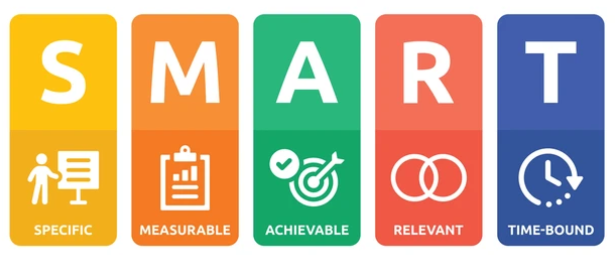4-Step guide to Creating a Bulletproof Fitness Plan
Whether you’re someone who has never explored the world of exercise before or are coming off a long break, we often may find ourselves overwhelmed and unaware of how to approach our personal fitness journey. Many dive right into it, either immediately jumping into the first workout program that they can find on google, or hopping on the diet that their favorite influencer follows. We may often feel an urgency to get started right away and although this motivation and excitement are amazing things, it can lead us to jump the gun without a proper plan or purpose. Before getting started I recommend you consider the 4-step checklist that I have laid out for you. I guarantee that if you’re intentional with going through this checklist, you’ll be in the best position to optimize your time, overcome barriers, as well as reach and maintain your goals.
Step 1 – Find your why
It sounds corny but this is going to be the cornerstone of your fitness journey. This “why” will be different for every person. The reality is that everyone is in different stages of life, comes from a different background, and will have different reasons for wanting to partake in exercise. It may be intrinsic or extrinsic. Short term or long term. For many it will be for longevity and quality of life. For others it may be because they’ve seen the impact of disease firsthand with family and friends. For others it’s going to be to look/feel a certain way. A good buddy of mine is a marathon runner and ex-competitive swimmer. His answer was, “so that I can eat whatever I want”. Each person’s “why” will differ dramatically. Regardless, it’s integral that you reflect on what that is for you. When times get tough, when motivation is low, when life happens – this is what will keep you centered. Furthermore, it allows you to start building part two of the four-step checklist.

Checkpoint 2 – Set a SMART goal
Once you have established a firm foundation of why you’re embarking on your fitness journey, it is then important to determine what exactly you’re working towards. The abbreviation SMART is commonly used as a goal setting tool.
S – specific – What exactly do you want to achieve? If it’s to lose weight, how much? If it’s to be fitter, is it speed, strength, muscle size? If it’s to improve your flexibility, where exactly do you want to gain flexibility?
M – Measurable – What is the metric that you’re going to use to determine progress? (i.e. lose 10 pounds, be able to run 5 kilometers in 30 minutes, touch my toes)
A – Attainable – Is what you’re setting as your goal realistic? Is it healthy? Will it be at the expense of other important aspects of your life?
R – Relevant – how does this goal relate to your “why”?
T – Time-bound – When are you trying to achieve this goal by? Having a goal allows you to have a tangible destination/target to which you can plan your steps towards.
When first consulting will clients, this is one of the first things that is discussed. When you thoroughly understand what you’re trying to achieve and when you’re trying to do it by, you’re ready for step 3.

Checkpoint 3 – Make a plan
Once you understand what you're trying to achieve and when you're trying to achieve it by, you're ready to establish your plan. What exactly this plan will look like will differ based on each individual and it is impossible for me to describe how that will look like for you. However, I will touch on key elements of each plan that are integral to its success. Before your do anything, pull up your calendar. The first step to formulating a plan that you can stick to is to establish your non-negotiables. These are things in your everyday life that you know will take up time and resources. Examples include work, family time, personal time, regular social events, etc. Once you have generated this list, I want you to block off time for all these activities. This is the number one place that I find people get it wrong!!! To cement a plan and a routine that is sustainable, it must work for your lifestyle and schedule. Get this backwards and your plan will inevitably fail.
Next, I want you to schedule in the date you have established for your SMART goal. This will allow you to visualize your goal. Combining this alongside the time you have left over after your non-negotiables, you can then establish a skeleton of your plan. Once again, the exact plan will be specific to everyone’s goals and may often require some self-study. If this is an area you’re unfamiliar with, consulting a trainer (shameless advertising), or even a friend will credible experience is a great way to set yourself on the right path. My best tip for you however, is to ensure that you choose methods of accomplishing your plan that you enjoy. If its to clean up your eating, ensure you’re doing sufficient research to find meal plans and recipes that you enjoy. If it’s to improve your fitness, choose activities that bring you pleasure. Second to not establishing non-negotiables, this is the second place where I find people get it wrong. For every goal, there are a plethora of ways to achieve it. Put yourself in the best possible position when you are motivated so that when you aren’t motivated, you’ll be set for success. Invest in finding the most enjoyable and pleasurable means of achieving your goal.

Checkpoint 4 – Identify barriers and address them before they arise
My husband took the car, and I couldn’t make it to the gym. I was so tired at the end of the day I had no energy to workout. My injury is acting up. Sound familiar? These are examples of barriers. These are inevitable and it’s essential that these are identified early so that they can either be avoided or a solution is established before it arises. Before creating your plan, I want you to list all of the possible barriers that you can see coming up. I then want you to write a solution to all of these in advance. Once again, the challenges and solutions for each person will be individualized and thorough reflection will be required. Some challenges and solutions may include:
If you know you’re extremely tired at the end of the day – Schedule in your workouts in the morning/mid-day
If you know you have days at work that are busier than most – Ensure you’ve delegated time to prepare healthy meals in advance
If you lack the means/motivation to consistently go to the gym – Invest in some equipment equipment or look to work with an in-home trainer (shameless plug #2)
If you know you can’t resist snacks when they’re in the house (admittedly my kryptonite) - don’t buy them in the first place! We’ve seen it time and time again with friends, family, and possibly even ourselves. A commitment to change is made, the momentum seems unstoppable at the beginning, we’re consistent at the gym, meal prep is going well, but within a month we gradually fall back into our old ways because we failed to plan. It is important that you’re proactive when you’re creating your plan - identify barriers before they come up, address them, and create a well thought out plan. Invest the time into putting yourself in the best position to achieve your goals, your future self will thank you.
